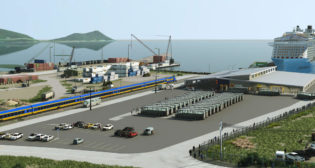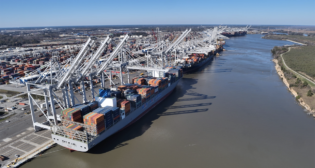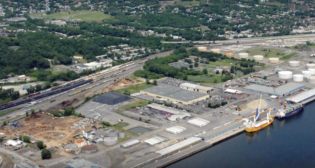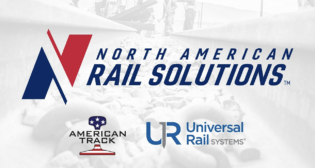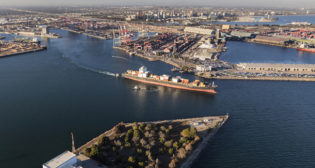
Savannah rail projects FASTer to intermodal
Written by William C. Vantuono, Editor-in-Chief
The Georgia Ports Authority announced on July 6 it has received a $44 million Fixing America's Surface Transportation (FAST) grant from the U.S. Department of Transportation to increase rail capacity at the Port of Savannah.
The $44 million award, made possible through the Nationally Significant Freight and Highway Projects (NSFHP) Program, is a significant portion of a total $128 million project known as the Port of Savannah International Multi-modal Connector. The project is expected to take five years to complete.
Currently, 18% of the containers handled at Garden City Terminal moves on Class I railroads Norfolk Southern and CSX. The Port of Savannah handled 3.73 million TEUs (twenty-foot equivalent container units) in 2015.
“I would like to thank the Georgia Congressional delegation, including Congressmen Buddy Carter and Rob Woodall, and Senators Johnny Isakson and David Perdue, for their dedicated support of this program,” said GPA Executive Director Griff Lynch. “As the nation’s fourth busiest container port, Savannah’s continued rail expansion is a key component to freight mobility in this country. This transformative project will not only increase rail capacity and velocity at the Garden City Container Terminal, but will also provide substantial benefits to surrounding communities by improving public safety, reducing environmental impacts and avoiding commuter traffic.”
“Investments such as this and the related inland rail facilities throughout Georgia will help shift more containers from truck to rail, allowing greater efficiency and reduced highway congestion,” GPA Board Chairman Jimmy Allgood said. “Rail cargo will play an important role in our future, not only increasing our capacity, but opening up new markets for Georgia’s ports. Gov. Nathan Deal has also announced a $10 billion freight mobility plan to be carried out over the next 10 years, which will improve the capacity and fluidity of transportation infrastructure across the state.”
